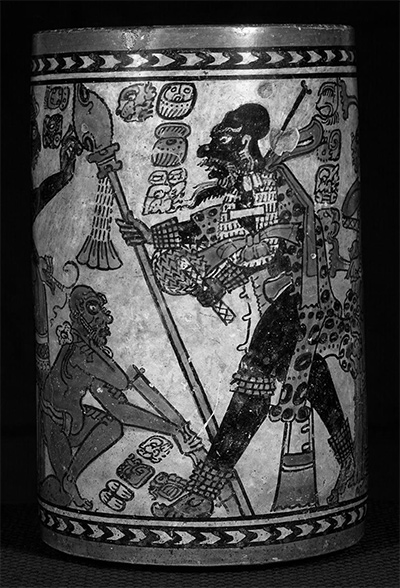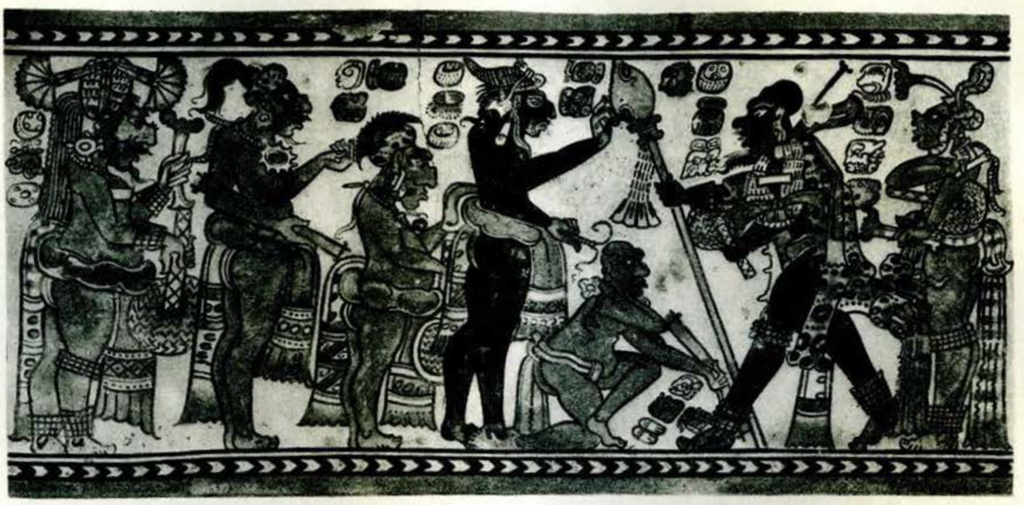
Museum Object Number: 38-14-1
THE Museum’s collection of Maya Pottery, which already contained probably more examples of outstanding artistic merit than any other collection, has been further enriched by the loan of the most noted of all Maya pottery vessels. This is generally known as “The Vase of Chamá” notwithstanding the fact that other vessels from Chamá are extant. It was reproduced as the first plate of the large album, Maya Pottery, now being published by the Museum, this leading position being indicative of its importance; in Plates XI and XII are shown smaller reproductions made from the album plates.
The history of this vase is of particular interest. It was found by Mr. Ebenezer Cary of Philadelphia in 1893 on his coffee plantation at Chamá, Guatemala. The excavation there was begun by the noted Maya archeologist, E. P. Dieseldorff, who was later compelled to cease these excavations. Mr. Cary then continued them and at once came upon this beautiful vase. Mr. Dieseldorff, however, published the first description of the vase in 1894, since which time his illustration of it has frequently been reproduced in works dealing with aboriginal American art. Although he did not claim possession of it, many archeologists have assumed that he was its owner, and one even stated that he understood that it had been lost in a fire in a New York hotel. The vase remained in Mr. Cary’s possession in Philadelphia until his recent death when Mrs. Cary very generously agreed to lend it to the Museum as a memorial to him. The vase is therefore now on public exhibition for the first time.

Museum Object Number: 38-14-1
Image Number: 19568
The vase is in perfect condition and is an admirable example of Maya art. The scene depicted is a religious ceremony possibly preceding a human sacrifice, which rite was sometimes celebrated by the Maya, though by no means to such an extent as by the Aztec. The figures painted in black represent the priests while the kneeling figure between them is presumed to be the one doomed to sacrifice. The other four figures are presumably assistants at the ceremony. The glyphs which are seen in various places probably indicate the nature of the rite or the names of the persons, but our knowledge of these is yet not sufficiently advanced to permit more than a guess regarding their true interpretation.

